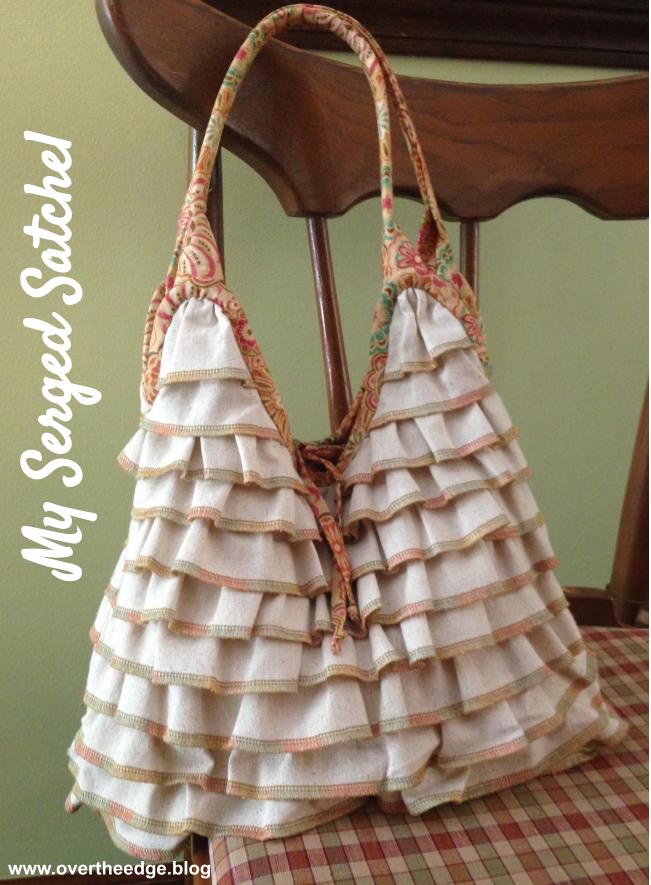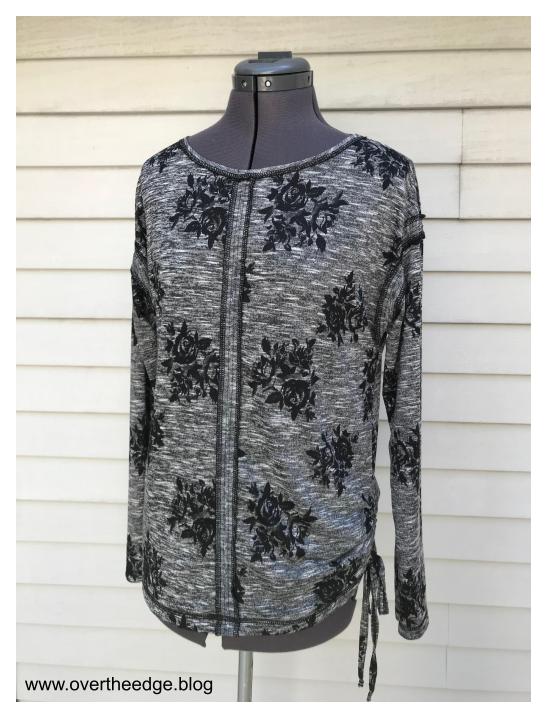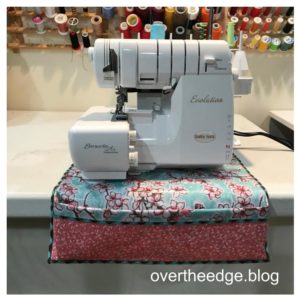My Serged Satchel
I received many compliments while out and about carrying my serged satchel. Everyone always asked me where I bought my bag. With a smile, I said thank you and told them that I made it. I kept using the bag until it was very, very worn. What a sad day it was when I finally retired my serged satchel!
The Pattern
I made the purse using a pattern from Indygo Junction, called the Serged Satchel. The bag is flirty and feminine and is loaded with ruffles that highlight exposed serged edges.
My Serged Satchel
The bag I made looked very similar to the light colored purse on the pattern envelope. I used osnaburg fabric for the outside of my bag and a cotton print for the inside. Osnaburg is a rustic looking fabric like muslin, only more coarse. I edged the ruffles with a variegated YLI machine quilting thread. Thin fusible fleece gave the bag some soft stability.
I serged the edges of the ruffle strips using a basic 4 thread serger with a standard 4 thread overlock stitch. I also used my serger to gather the strips. The rest of the bag was constructed using a sewing machine per Amy Barickman’s instructions.
I used the leftover ruffle strips to make 2 pockets for the inside of the bag.
Thoughts on the Serged Satchel
If you’ve ever sewn a purse, you know that they are more effort to put together than you may think. And this purse was no exception, but it was worth it. I could always count on my serged satchel and its fun ruffles to brighten my day!

Resources
If you would like more information about the pattern, click on this link to go to the Indygo Junction website at: https://indygojunction.com
If you would like more information about gathering and adjusting ruffles using a serger, please see my tutorial: https://overtheedge.blog/tutorials/his-hers-serger-pillowcases-tutorial/





















